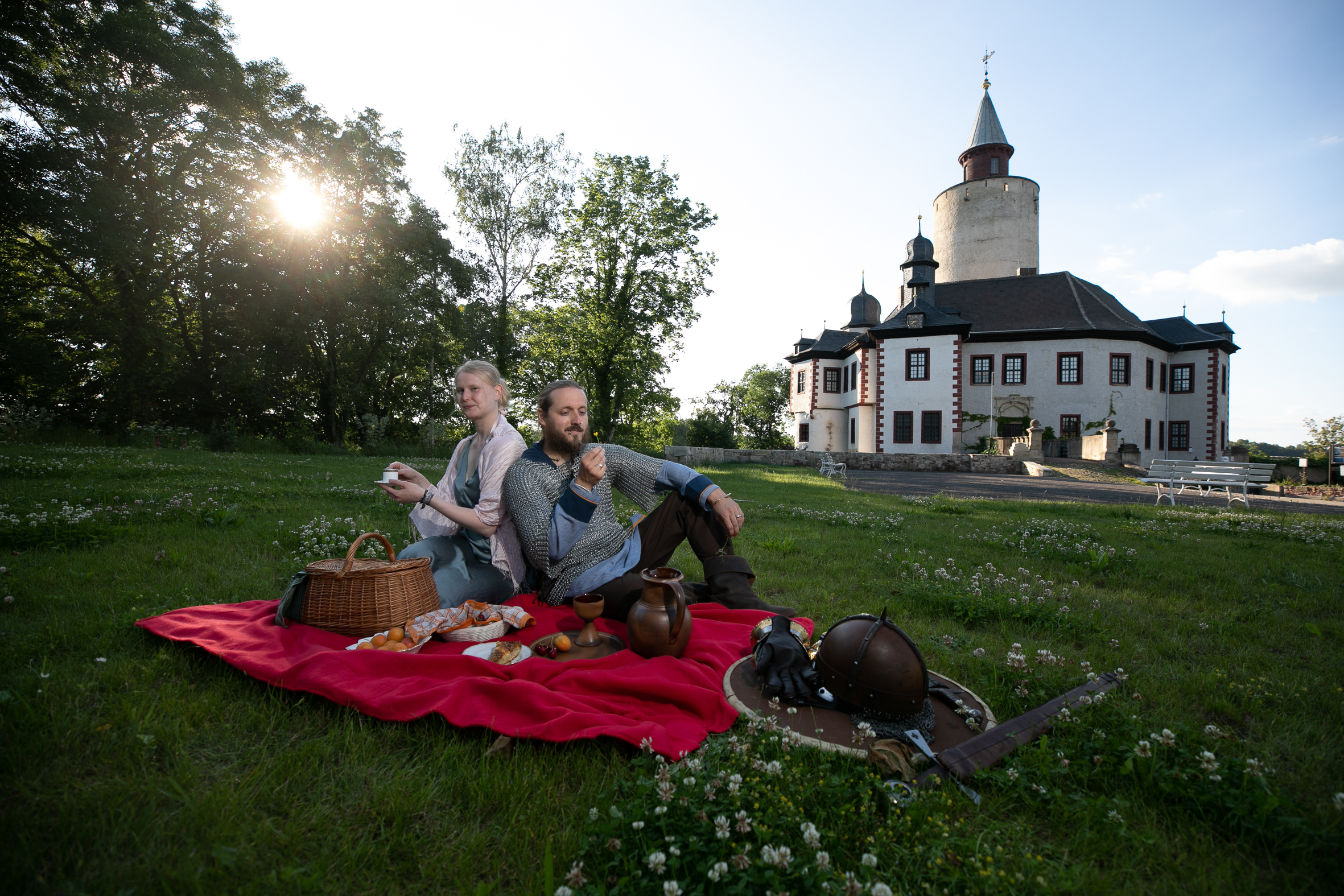 It’s #MuseumWeek on Twitter and in other social networks. Today’s slogan is #peopleMW. Posterstein Castle focusses this year on Hans Wilhelm von Thümmel (1744–1824), a minister of the Duchy of Saxe-Gotha-Altenburg, who chose himself a very special burrial plot.
It’s #MuseumWeek on Twitter and in other social networks. Today’s slogan is #peopleMW. Posterstein Castle focusses this year on Hans Wilhelm von Thümmel (1744–1824), a minister of the Duchy of Saxe-Gotha-Altenburg, who chose himself a very special burrial plot.
As a friend of Duke Ernst II of Saxe-Gotha-Altenburg (1745–1804) Thümmel’s influence on court was huge. Today he is still known for his engagement in the county of Altenburg: He founded one of the first banks, supported the building of roads, mapped the region and founded the local hospital in Altenburg. In Thümmel’s house in Altenburg the local high society met for tea, among others his older brother, the writer Moritz August von Thümmel (1738–1817).
Thümmel’s old-age residence close to Posterstein
When he retired, Thümmel lived mostly in his castle in Nöbdenitz near Posterstein. In the countryside around the castle, Thümmel had a pleasure garden and a path along the lake invited the guest to dander. Friends of the family, as the Duchess Dorothea of Courland (1761–1821), who had her summer residence near-by in Löbichau castle, came to visit Nöbdenitz to sail on the lake and to enjoy the garden. Thümmel was member of the Duchess’ poets club and published several books with witty aphorisms.Before his death Hans Wilhelm von Thümmel decided to get buried at an inconvenient place – under the so-called 1000 year old oak of Nöbdenitz. He bought the tree from the local church and let arrange a grave between the tree’s roots. The writer Emilie von Binzer (1801–1891), guest in Löbichau, met Thümmel when she was a young girl. She noted in her book “Three summers in Löbichau” (“Drei Sommer in Löbichau”) that Thümmel was old as the hills by the time she met him and that he had an old oak in standby state to be burried underneath.
Still burried under the 1000 year old oak tree
This grave was inspected in 1959 by the local teacher and historian Ernst Bräunlich. He documented that there was a small oratory with a wooden bench inside the hollow tree, to commemorate the dead. The minister’s body lies in a coffin parallel to the street. Today one can only look at the tree from outside. A sign tells its story. Only parts of the castle complex and garden outlived the years of the German Democratic Republic.
In connection to the Thuringian state exhibition on the Ernestiner family the museum Posterstein Castle shows an exhibition on Hans Wilhelm von Thümmel opening June, 26th. A book will be published as well.
By Marlene Hofmann / Museum Burg Posterstein
More information:
Exhibition from June 26th to October 30th
Thümmel in Nöbdenitz
The Duchess Anna Dorothea of Courland













